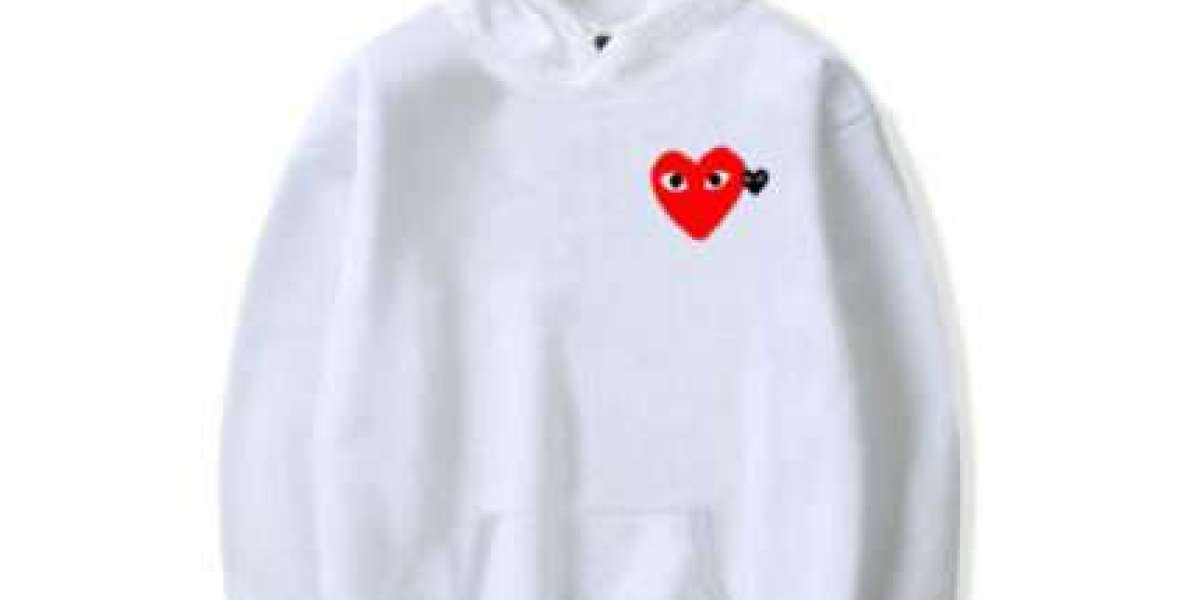In the world of fashion, few names evoke the same level of reverence and intrigue as Comme des Garçons. A brand born from a defiance of tradition and a passion for Comme Des Garcons avant-garde experimentation, Comme des Garçons transcends the limits of clothing design. It is a cultural force, a philosophical statement, and a bold exploration of what fashion can become when it is unbound by convention. At its core lies a radical spirit that continues to reshape the boundaries of art, fashion, and rebellion.
The Origins: Rei Kawakubo’s Vision
Comme des Garçons was founded in 1969 by Japanese designer Rei Kawakubo. Initially starting as a women’s fashion label in Tokyo, the brand’s name—French for "like the boys"—already hinted at its subversive intentions. Kawakubo had no formal fashion training; instead, she studied fine arts and literature. This academic background, combined with an intuitive design sensibility, led her to create clothing that prioritized shape, space, and texture over trends and tradition.
From the beginning, Kawakubo aimed to challenge the Western ideals of beauty and femininity. Her pieces often distorted the silhouette, hiding rather than emphasizing the body's natural form. This aesthetic rebellion soon earned the label a reputation as an intellectual and artistic brand, more interested in provoking thought than catering to commercial tastes.
Breaking into Paris: The Shock of 1981
The global fashion world was formally introduced to Comme des Garçons in 1981 during Paris Fashion Week. The debut show was a shock to the system. Models walked the runway in black, tattered garments that seemed unfinished or deconstructed. Critics called it the “Hiroshima chic” collection, referring to its raw, post-apocalyptic appearance. But this critical moniker only emphasized how deeply the collection disrupted the established fashion order.
Unlike the polished glamour of Parisian couture, Kawakubo’s designs were emotional, confrontational, and anti-fashion in the most literal sense. Her disregard for traditional tailoring, use of monochromatic palettes, and emphasis on imperfection introduced a new fashion vocabulary—one that prized intellectual depth and artistic expression over surface beauty.
Art as a Language of Design
To understand Comme des Garçons, one must view it through the lens of art as much as fashion. Kawakubo doesn’t merely design clothing; she constructs ideas. Many of her collections explore complex themes such as identity, gender, aging, and death. These ideas are manifested through unconventional silhouettes, asymmetry, layered fabrics, and sculptural designs that often blur the line between garment and installation art.
One iconic example is the 1997 “Body Meets Dress, Dress Meets Body” collection, sometimes referred to as the “lumps and bumps” collection. Padded protuberances distorted the models' bodies, creating shapes that were intentionally grotesque and unflattering. Critics and fans alike debated whether the pieces were clothing or social commentary, but they could not deny their impact. The collection challenged not only what fashion should look like but also how we define the body itself.
Commercial Success Without Compromise
Despite—or perhaps because of—its radical aesthetic, Comme des Garçons has achieved remarkable commercial success. The brand has expanded into multiple lines, including Homme Plus, Play, and Shirt, each catering to different audiences while retaining the core avant-garde spirit. Collaborations with mainstream brands such as Nike, Converse, and Supreme have helped bridge the gap between high fashion and streetwear, bringing Kawakubo’s vision to a broader audience without diluting its integrity.
The Comme des Garçons Play line, recognizable by its iconic heart-with-eyes logo designed by Filip Pagowski, is a testament to the brand's ability to balance accessibility with artful design. It is not uncommon to see the logo on T-shirts, sneakers, and hoodies around the world, often worn by people who may not even know the rebellious legacy behind the brand. This accessibility coexists with Kawakubo's more conceptual collections, creating a rare duality of cult appeal and commercial reach.
The Impact on Gender and Identity
Comme des Garçons has also played a significant role in the conversation around gender and identity in fashion. Long before gender-fluid fashion became a trend, Kawakubo was designing clothes that ignored the binary altogether. Her garments are often ambiguous in their intended wearer, focusing instead on form, texture, and conceptual storytelling. By rejecting traditional gender codes, Comme des Garçons helped pave the way for a more inclusive and exploratory fashion landscape.
This fluidity extends into the brand’s presentation as well. Kawakubo rarely uses conventionally beautiful models. She chooses individuals who bring a unique presence to the runway, often older models, people of various ethnicities, and those whose looks defy fashion norms. In doing so, Comme des Garçons challenges the industry to rethink not just what people wear but who is allowed to wear it.
The Dover Street Market Phenomenon
Kawakubo’s influence extends beyond clothing through the creation of Dover Street Market, a retail concept launched in 2004 in London. It is more than just a store; it is a curated space that merges art, fashion, and culture under one roof. Each location—be it in Tokyo, New York, or Los Angeles—reflects Kawakubo’s creative direction, featuring experimental installations, exclusive pieces, and collaborations with emerging designers.
Dover Street Market embodies the same ethos as Comme des Garçons: a place for boundary-pushing creativity and unapologetic individuality. It fosters an environment where the commercial act of shopping becomes an immersive experience, blurring the lines between retail, gallery, and performance space.
Legacy and Influence
Comme des Garçons’ impact on the fashion world cannot be overstated. It has inspired generations of designers, from Yohji Yamamoto and Junya Watanabe (a protégé under Kawakubo’s wing) to contemporary names like Craig Green and Rick Owens. The brand’s influence also spills into the art world, frequently featured in museum exhibitions and academic discussions on design and cultural studies.
Yet for all its acclaim, Comme des Garçons remains Comme Des Garcons Long Sleeve elusive. Kawakubo herself rarely gives interviews or makes public appearances. She lets the clothes speak, allowing space for interpretation, discomfort, and dialogue. This commitment to mystery and artistic integrity only deepens the brand’s allure.
Conclusion: Fashion as a Form of Rebellion
Comme des Garçons is not just a fashion label; it is a philosophy of resistance. It resists norms, challenges expectations, and insists that clothing can be more than mere adornment. Under Rei Kawakubo’s guidance, it has become a medium through which complex ideas are expressed, where beauty is found in imperfection, and where art and rebellion coalesce.
In a world driven by trends and commercial success, Comme des Garçons stands as a testament to the power of creative authenticity. It reminds us that fashion, at its most profound, is a form of expression—one that can question, disrupt, and ultimately transform the way we see ourselves and the world around us.








